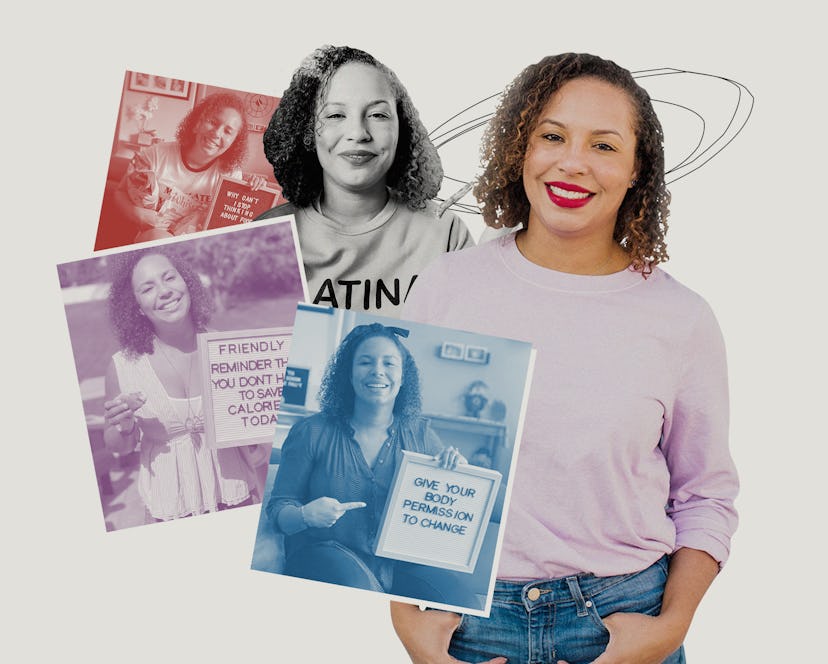Wellness
How One Anti-Diet Dietitian Honors Her Cultural Foods On Instagram
“We don't have to compromise the authenticity of a dish to give ourselves permission to enjoy it.”

Instagram is rife with wellness influencers who make a living off of telling you how to eat to feel your best — which, more often than not, is just a codeword for dieting. We spoke to Dalina Soto, RD, LDN, an anti-diet dietitian with more than 32,000 Instagram followers, about building a social media platform that defies diet culture and honors cultural traditions to create a decolonized version of wellness. As told to Kyli Rodriguez-Cayro.
I recently came across a post in which a woman mentioned she never ate two slices of pizza at once until her thirties, and that is the culture I'm trying to dismantle. I examine how diet culture reinforces why many of us are so afraid of food, and why we characterize certain ones as good or bad. It’s no secret that social media influencers reinforce this idea, promoting fad diets with quick results. They market fast but unsustainable results to followers that are understandably tempting to try.
In the nutrition world, authentic Latinx fare is often villainized, particularly staples like white rice and tortillas. Almost every client I work with has come to me because they've been told our authentic dishes are "bad." Early in my career, I worked with Latinx clients living with chronic illnesses who were told to cut out carbohydrates or “anything white” to manage their health; this often meant asking them to give up cultural foods they’d eaten their whole lives. Working from an anti-diet perspective, I always think about what we can add as a source of nutrition, rather than what we can remove. This can look like incorporating different cultures into meals or looking at what else there is to order from your local pizza place’s menu, like adding different toppings or a side.
The more substitutes we make, the more likely we are to forget abuela's original recipe over time.
But it also requires unlearning the American standard that your meal must look a certain way, that you must have a plate that consists of half vegetables and fruits. Traditional Latinx dishes may not feature broccoli or cauliflower as sides, but we eat yuca and sauces rich in root vegetables. People think you're not getting enough plants into your meal without realizing that you’re cooking with them.
Food is more than nutrition or fuel for your body. Our ancestors ate these foods. They are woven into the fabric of our cultural histories — and we can keep our cultures alive and thriving. Whenever I go home, I love to post my cultural foods, so my followers see that I’m eating my mom’s white rice and beans. I'm against the idea of “healthifying” traditional Latinx dishes. We don't have to compromise the authenticity of a meal to give ourselves permission to enjoy it. The more substitutes we make — like swapping white rice for cauliflower rice or yogurt for sour cream — the more likely we are to forget abuela's original recipe over time.
There is a common misconception that being anti-diet means being anti-health. But on social media, it means going against the norm and providing nutrition and wellness resources that are going to offer support rather than foster shame. I eat ice cream in my posts proudly and remind my followers they don't have to "earn" the right to eat desserts or snacks. I tell them to throw out the scale. Living your best life defining what health means to you — there’s nothing more empowering for your wellness than that.
This interview has been edited and condensed.